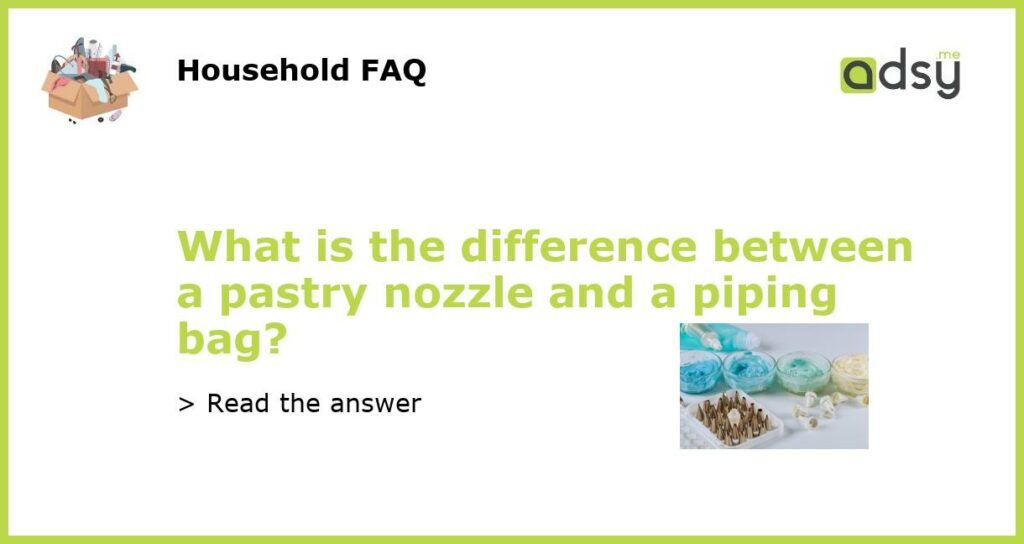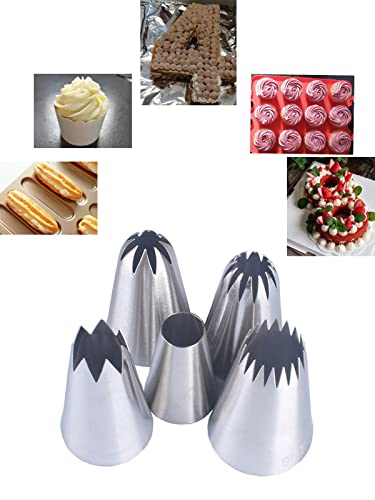What is the difference between a pastry nozzle and a piping bag?
Pastry nozzles and piping bags are essential tools for bakers and pastry chefs. They are used to create beautiful and intricate designs and shapes with various types of dough and icing. While they are often used together, there are some key differences between the two.
What is a pastry nozzle?
A pastry nozzle, also known as a decorating tip or icing tip, is a small metal or plastic attachment that is fitted onto the end of a piping bag. These nozzles come in various shapes and sizes, each designed to create different decorative effects. Some common shapes include round, star, leaf, petal, and basketweave.
The main purpose of a pastry nozzle is to control the flow of dough or icing as it is being squeezed out of the piping bag. The shape of the nozzle determines the final shape of the design. For example, a round nozzle will create a smooth, circular shape, while a star nozzle will create a pattern with small points.
What is a piping bag?
A piping bag, also known as a pastry bag, is a cone-shaped bag made of cloth, plastic, or silicone. It is used to hold the dough or icing that is being piped onto a cake, cookie, or other baked goods. The bag is often fitted with a pastry nozzle at the narrow end to control the flow of the mixture.
Piping bags come in different sizes, with larger bags used for more substantial quantities of dough or icing, and smaller bags used for more intricate designs. They are typically held with one hand while the other hand squeezes the bag to push the mixture through the nozzle.
The difference between a pastry nozzle and a piping bag
The main difference between a pastry nozzle and a piping bag is their functionality. A pastry nozzle is a removable attachment that is fitted onto the end of a piping bag. It controls the flow and shape of the dough or icing as it is being piped. A piping bag, on the other hand, is the vessel that holds the dough or icing. It can be used with or without a nozzle, depending on the desired effect.
Another difference is the material used to make them. Pastry nozzles are typically made of metal or plastic, while piping bags can be made of cloth, plastic, or silicone. Metal nozzles are often preferred for their durability and ability to withstand high temperatures, while plastic and silicone nozzles are more flexible and easier to clean.
How to use a pastry nozzle and piping bag?
To use a pastry nozzle and piping bag, first, fit the desired nozzle onto the narrow end of the bag. Make sure it is securely attached. Then, fill the bag with the dough or icing. It is essential not to overfill the bag, as this can cause it to burst or leak. Twist the top of the bag to push the mixture towards the nozzle.
Hold the bag with one hand and use the other hand to apply pressure to the filled portion of the bag. Squeeze the bag gently to control the flow of the dough or icing. The pressure applied will determine the thickness and intensity of the design being created. Practice is essential to achieve the desired results.
In conclusion, while pastry nozzles and piping bags are often used together, they serve different purposes in the baking and pastry industry. A pastry nozzle is a small attachment that controls the flow and shape of the dough or icing, while a piping bag is the vessel that holds the mixture. Understanding how to use these tools properly can help bakers and pastry chefs create beautiful and intricate designs on their baked goods.






